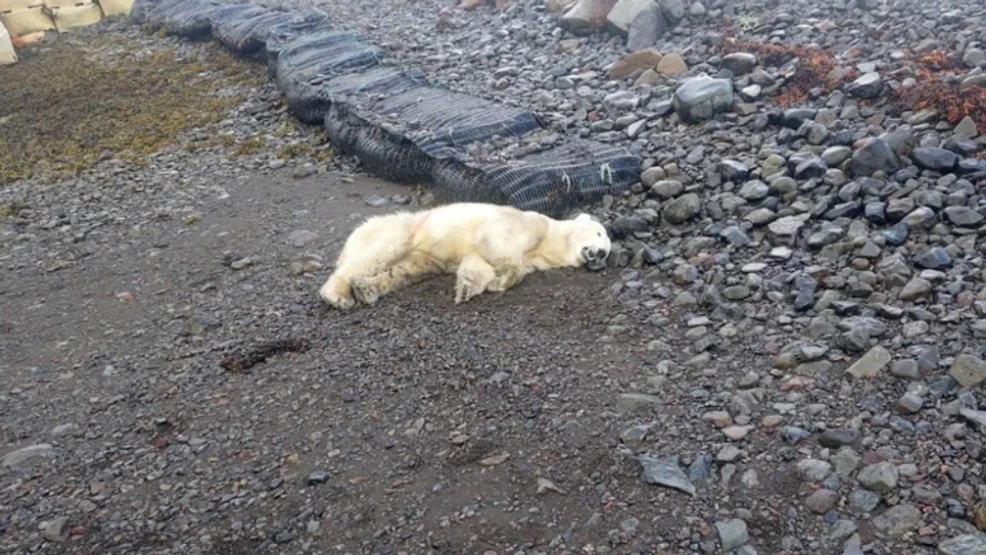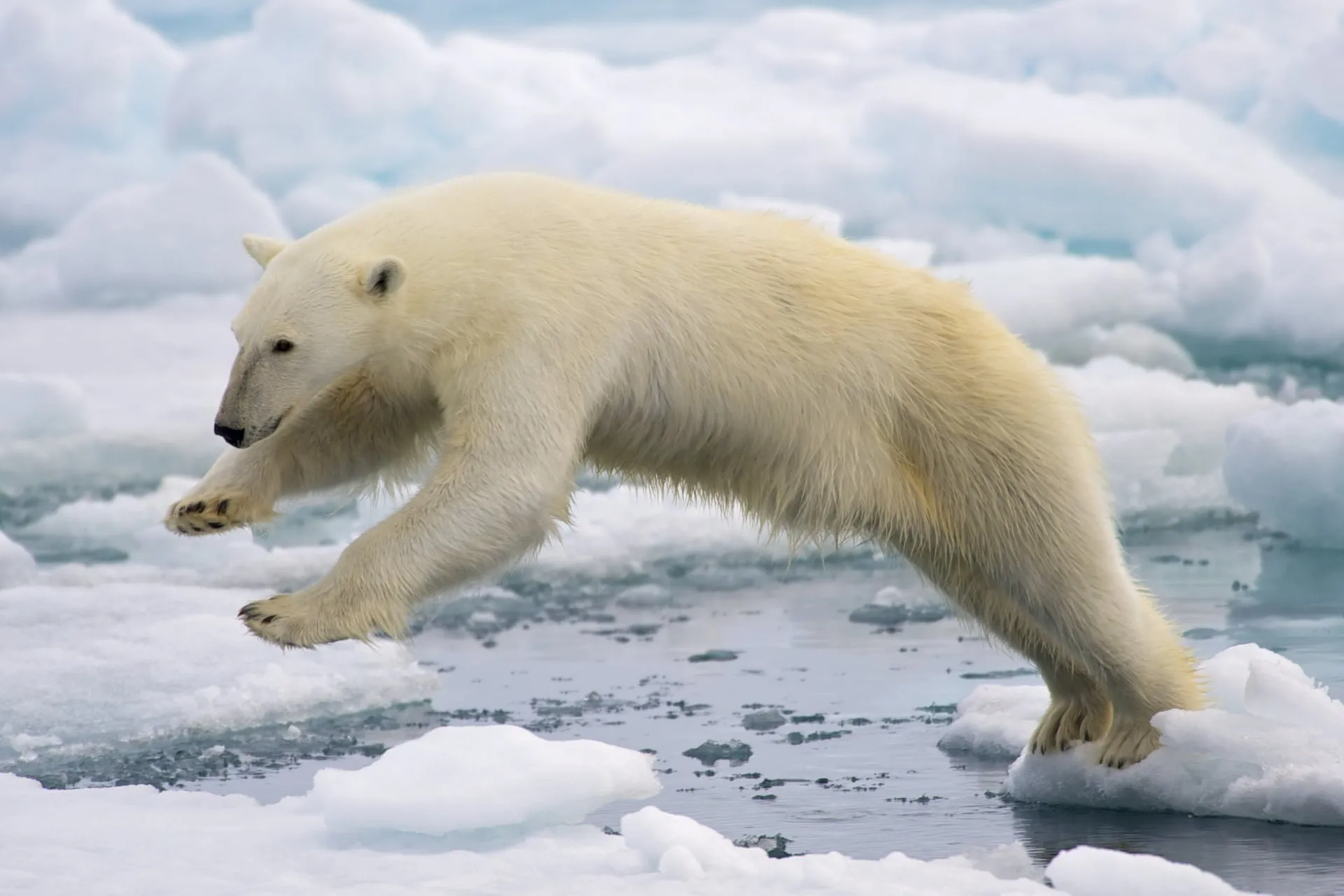| In Short |
| A rare polar bear was spotted in Iceland for the first time in eight years but was shot dead by police |
| The bear’s arrival was likely due to melting ice caps and climate change, forcing it to search for food |
| Icelandic authorities cited public safety concerns as the reason for killing the bear. |
| The incident has sparked debates about whether more humane options, like tranquilization, were possible. |
| The polar bear’s death underscores the urgent need to address climate change and its impact on wildlife. |
For the first time in eight years, an Icelandic polar bear was seen and the excitement and concern spread throughout the entire country, little did it bring joy to this arctic creature when the polar bear was shot dead by the Icelandic police killing it, polar debates have been reigned with regards to legitimacy of killing the bear and what could have been done differently
A Rare Visitor from the Arctic
Polar bears hardly wander their way to Iceland, because it does not form a part of their natural living range. The last time a polar bear was seen in Iceland was in 2016. This recent one is exceptional. That ice-floe-drifting bear, perhaps coming from Greenland, was first seen around the village of Kópasker in Northern Iceland.

Experts indicate that it was probably looking for something to eat or was disoriented. Polar bears are swimming animals and, on long distances over time, especially because of the change in climate and melting ice caps, move in search of food. So when this particular polar bear appeared in Iceland, it reminded one of how polar bears really struggled in the Arctic.
Why the Polar Bear Was Shot
The police made the decision to shoot the polar bear, and their reasoning was based on increasing risk by the bear toward public safety. The police said the bear would often stray to residential areas which meant that there was an increasing risk of causing harm to the locals.

Polar bears are large-sized, powerful predators. The authorities feared that the bear might turn aggressive, especially when it feels threatened or loses its food supplies.
Despite the fact that the police have a duty to protect the public, killing the bear has been labeled a decision that calls for questioning if there would have been other alternatives in place before necessarily killing it. Was it possible to tranquilize and relocate the animal to a much safer environment, or was shooting the bear the only option?
Public Outcry and Environmental Concern
This killing has caused heated debate not just in Iceland but in the world at large. The more, the people feel outraged and disappointed by this incident because enough could have been done to conserve the bear. The police have been criticized on their part by environmentalists and animal rights activists who boasted allegations against them for not trying any alternative solution, such as tranquilizers whereby it could have been safely captured and moved to a habitable place.
Other commentators believe that the incident is more of an issue in the human relationship with nature, taking into account the type of climatic changes that make the animals leave their common habitats. This displacement of the polar bears brought about by melting ice caps forces them to appear in odd places, such as in Iceland, and requires proper mechanisms for handling such situations.
Why Wasn’t the Polar Bear Tranquilized?
The public is asking an important question: whether tranquilizing the bear would have helped-and some argue it wouldn’t have worked. According to Icelandic officials, tranquilizing a polar bear isn’t nearly as smooth a process as it sounds. “It takes time for tranquilizers to take effect,” said Drivenes. “There’s always a chance that the bear might get agitated or even aggressive before they can get fully sedated.”. Additionally, the polar bear was not far from residential areas and would thus increase the risk of harming people nearby when administered with a tranquilizer.
Secondly, Iceland lacks infrastructure as well as experience in dealing with such cases since it only rarely has polar bear cases. Other countries such as Canada and Greenland have a number of experienced teams and facilities that are used in capturing and relocating polar bears.
Polar bears and climate change
This exposes the greater issue that climate change causes to Arctic wildlife as ice caps melt fast and polar bears lose their natural hunting grounds, making them travel over distances just to seek food. This has resulted in a more publicized appearance of the species such as the Icelanders sighting.
It said that with changing climatic conditions, polar bears will face even more challenging times while hunting or searching for shelter. These bears are bound to come across humans more frequently as they move into areas where they had not ventured earlier in their pursuit of food. The sad death of the bear in Iceland makes one feel the extent of damage climate change is causing to animals and the need to act quickly on such weak species.
Lessons Learned from the Incident: How Can We Do Better?
The death of the polar bear has given rise to debates on how Iceland, among other countries, can better prepare to respond to such situations in future. Some of these recommendations are discussed below:
- Training and Equipment: Equipping local authorities with training on wildlife encounters; including proper use of tranquilizers and safe relocation techniques.
- Polar bear collaboration with Arctic professionals: Joining forces with experts from countries such as Canada and Greenland to put together plans for handling errant polar bears and other Arctic wildlife that wander into new lands.
- Public Awareness: Prevent panicking; educate the public on the dangers and behaviors that would allow citizenry to know how to react if they catch a glimpse of one.
- Habitat Protection of the Arctic: It is in combating climate change and protecting the polar bears’ natural habitats that lies the crux of the problem. Reducing greenhouse gas emissions, supporting conservation efforts, and raising awareness about the difficulties that lie in the path of Arctic wildlife are all parts of this process.
Conclusion: A Tragic Reminder of Our Impact on Wildlife
This may also be related to the need to reply better, as a society, to wildlife encounters in a changing climate. The killing of the polar bear in Iceland has given various persons the opportunity to raise thoughts regarding whether this was one of the best humane outcomes or if there could have been something else. Considering this new issue of climate change that continues to force the wildlife into unknown areas, more significant means are needed in terms of coexistence and preventing them from being hurt unnecessarily.
For Latest News Updates Click Here
